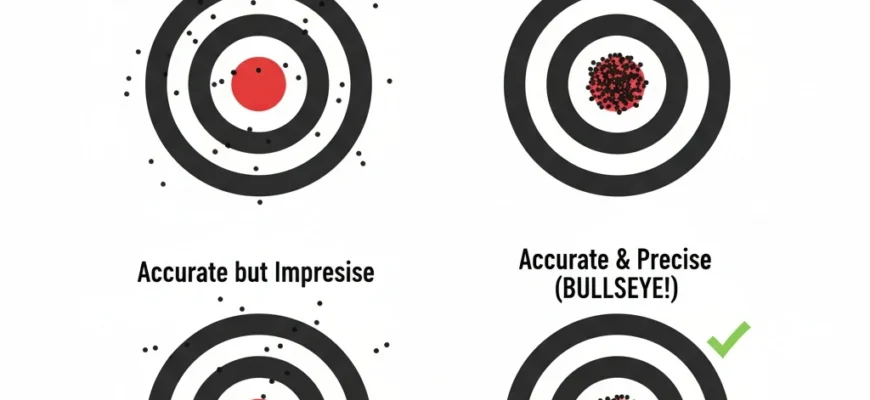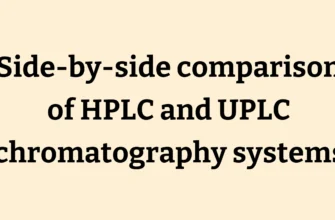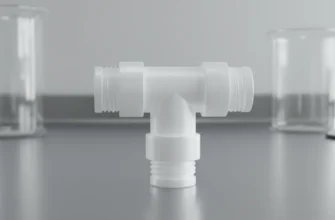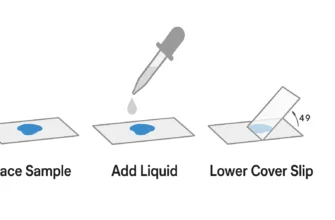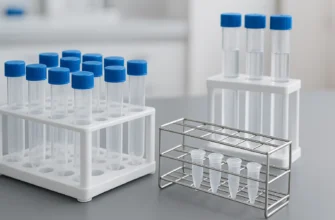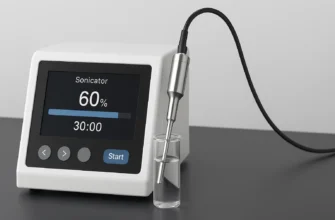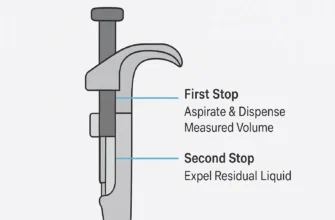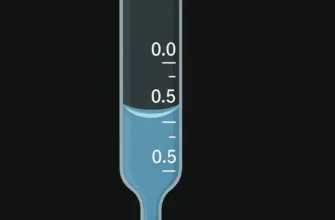In the world of scientific research, where breakthroughs can hinge on the smallest details, the integrity of a single drop of liquid is paramount. From developing life-saving drugs to ensuring environmental safety, the ability to measure and transfer liquids with absolute certainty is a non-negotiable requirement. This foundational task is supported by a vast and growing market for laboratory instruments, with the global lab equipment market valued at approximately USD 50 billion in 2023. Within this market, the humble pipette holds a place of unmatched importance, underscored by a projected U.S. pipettes market size of USD 720 million by 2034.
While many types of pipettes exist, one stands alone when unrivaled accuracy is the goal: the volumetric pipette. This article is your guide to mastering this essential tool, moving beyond basic function to explore the techniques, principles, and maintenance practices that transform routine liquid handling into an act of scientific precision.
The Critical Role of Pipettes in Modern Laboratories
Pipettes are the workhorses of the modern laboratory, indispensable in fields from analytical chemistry to molecular biology. They are the primary tools for liquid measurement and transfer, forming the basis for countless procedures. Whether it’s for solution preparation, performing dilutions, or setting up complex chemical reactions, the accuracy of the entire experiment often begins with the accuracy of the pipette. Without reliable liquid handling, experimental results become questionable, threatening the validity of research in areas like drug discovery and cell culture.
Why Precision and Reproducibility Matter
In scientific analysis, precision is not a luxury; it is the bedrock of credibility. Inconsistent measurements introduce measurement error, which can obscure true results, lead to false conclusions, and waste valuable time and resources. Reproducibility—the ability for another researcher to achieve the same results by following the same procedure—is the ultimate test of scientific validity. Precise liquid handling with tools like volumetric pipettes ensures that variability is minimized, making results more reliable and experiments truly reproducible. This is the standard required for all analytical applications.
Understanding the Pillars of Pipette Precision
 Accuracy vs. Precision: This diagram uses a target analogy to illustrate the difference. High accuracy means measurements are close to the true value (bullseye), while high precision means measurements are close to each other.
Accuracy vs. Precision: This diagram uses a target analogy to illustrate the difference. High accuracy means measurements are close to the true value (bullseye), while high precision means measurements are close to each other.
Achieving reliable results requires a clear understanding of the fundamental concepts that define measurement quality. For any piece of lab equipment, especially those used for liquid measurement, the terms accuracy, precision, and reproducibility are distinct but interconnected pillars of performance.
Accuracy vs. Precision: Clarifying the Concepts
Though often used interchangeably, accuracy and precision describe different aspects of measurement. Accuracy refers to how close a measured value is to the true or accepted value. A 10 mL volumetric pipette is accurate if it consistently delivers a volume extremely close to 10.00 mL. Precision, on the other hand, refers to the closeness of two or more measurements to each other. A pipette can be highly precise, delivering the exact same volume repeatedly, but still be inaccurate if that volume is not the correct one. The ideal laboratory instrument is both accurate and precise.
Reproducibility: The Gold Standard of Scientific Results
Reproducibility takes precision a step further. It is the ability of an entire experimental procedure to be successfully duplicated, yielding consistent results over time and between different laboratories or researchers. While precision relates to the consistency of a single instrument or user in one session, reproducibility is about the long-term reliability of the scientific process. Mastery of pipetting technique is a critical component in achieving this gold standard, as it eliminates a major source of inter-user variability.
Navigating the Pipette Landscape: Choosing the Right Tool for the Task
The term “pipette” covers a wide array of laboratory instruments, each designed for specific tasks. Selecting the appropriate tool is the first step toward accurate liquid handling. While a graduated cylinder is suitable for approximate volumes, precise work demands more specialized equipment.
Micropipettes: Precision in Microvolumes
Micropipettes, including single channel and multichannel pipettes, are adjustable-volume instruments designed for handling microliter-scale volumes (typically 1 µL to 1000 µL). They are essential in molecular biology, drug discovery, and other fields requiring the transfer of tiny amounts of liquid. While precise, their accuracy depends heavily on user technique, calibration, and the quality of disposable pipette tips. Electronic pipettes automate this process, enhancing reproducibility and reducing user fatigue.
Volumetric Pipettes: Uncompromising Accuracy for Fixed Volumes
Volumetric pipettes are the champions of accuracy for a single, fixed volume. Constructed from high-quality borosilicate glass for excellent chemical resistance, their design features a single calibration mark etched on a narrow neck. This eliminates the guesswork and interpolation error associated with graduated markings. Calibrated “to deliver” (TD), they are engineered to dispense their specified volume with exceptionally low error, making them the superior choice for preparing standard solutions and performing titrations where measurement accuracy is critical.
Graduated and Serological Pipettes: Versatility for Broader Volume Ranges
Graduated pipettes and their cousins, serological pipettes, feature volume markings along their length, allowing for the delivery of variable volumes. While more versatile than volumetric pipettes, this flexibility comes at the cost of accuracy. Reading the volume against a scale introduces potential error, making them less suitable for preparing analytical standards. They are best used for general-purpose solution preparation where the highest degree of accuracy is not the primary concern, similar to when one might use a graduated cylinder for bulk measurements.
Specialized Pipettes and Their Applications
Beyond the common types, specialized pipettes serve unique needs. Multichannel pipettes expedite work in high-throughput screening by transferring multiple samples simultaneously. Positive displacement pipettes are designed for handling viscous or volatile liquids that are challenging for standard air-displacement micropipettes. Pasteur pipettes are simple glass or plastic droppers used for non-quantitative transfers. Choosing the right tool requires matching the instrument’s capabilities to the specific demands of the analytical application.
The Art and Science of Flawless Pipetting Technique
The inherent accuracy of a volumetric pipette can only be realized through meticulous technique. The user is an integral part of the measurement system, and improper handling is a primary source of measurement error.
Essential Best Practices for Manual Pipetting
- Conditioning (Pre-wetting): Before taking the final measurement, aspirate and dispense the liquid back into the source container at least once. This coats the inner surface of the pipette, ensuring that the full volume is delivered subsequently.
- Aspiration: Submerge the pipette tip just below the surface of the liquid. Use a pipette bulb to draw the liquid slowly and steadily above the calibration mark, avoiding air bubbles.
- Setting the Meniscus: Remove the bulb and quickly cover the top with your index finger. Hold the pipette vertically at eye level. Carefully release pressure to allow the liquid to drain until the bottom of the curved meniscus rests exactly on the calibration mark.
- Dispensing: Touch the pipette tip to the inside wall of the receiving vessel at a slight angle. Allow the liquid to drain completely under gravity. Do not blow out the small amount of liquid that remains in the tip; the pipette is calibrated to account for it.
Common Pipetting Errors and How to Mitigate Them
- Parallax Error: Viewing the meniscus from an angle leads to an incorrect reading. Always view it at eye level.
- Temperature Differences: Pipetting a warm liquid into a colder environment (or vice versa) will affect the delivered volume. Allow all liquids and lab equipment to equilibrate to ambient temperature.
- Inconsistent Dispensing: Blowing out the final drop or rushing the gravity drain will deliver an inaccurate volume. Be patient and consistent.
- Air Bubbles: Bubbles in the pipette lead to a short-filled volume. Aspirate slowly and carefully to avoid them.
Mastering Different Dispensing Techniques
While volumetric pipettes rely on gravity drain, understanding micropipette techniques can inform overall good practice. Forward pipetting is the standard method for aqueous solutions. For viscous or volatile liquids, reverse pipetting (aspirating excess liquid and then dispensing only the set volume) can improve accuracy by compensating for liquid that may cling to the pipette tip or evaporate.
Calibration and Maintenance: The Foundation of Sustained Accuracy
A pipette is only as reliable as its last calibration. Over time and with use, even the most robust instruments can drift from their specified accuracy. A rigorous calibration and maintenance schedule is not optional—it is essential for scientific integrity.
Why Calibration is Non-Negotiable for Reliable Results
Calibration verifies that an instrument performs within its specified tolerance limits. For volumetric pipettes and other liquid handling tools, this ensures measurement accuracy. In regulated industries like pharmaceuticals, this is a critical component of quality control. The FDA’s focus on quality is intensifying, with the agency conducting 776 drug quality assurance inspections in FY2023, a significant increase over the previous year. This regulatory scrutiny underscores the need for impeccably maintained and calibrated lab equipment. The global pharmaceutical quality control market is projected to reach $18 billion by 2032, reflecting the industry-wide commitment to precision.
Understanding Pipette Calibration Methods
The gold standard for pipette calibration is the gravimetric method. This involves repeatedly dispensing a volume of distilled water into a receiving vessel on a high-precision analytical balance. The weight of the water is recorded, and using its known density (adjusted for temperature and atmospheric pressure), the actual volume delivered is calculated. This measured volume is then compared to the pipette’s nominal volume to determine its accuracy and precision.
Essential Maintenance for Longevity and Performance
Proper care extends the life and performance of your pipettes. For volumetric pipettes made of borosilicate glass, this means thorough cleaning after each use to prevent cross-contamination and residue buildup. Store them vertically in a designated rack to prevent chipping or breaking. For micropipettes, regular maintenance includes cleaning the piston, checking seals, and lubricating moving parts according to the manufacturer’s instructions.
Enhancing Your Pipetting Workflow: Beyond the Basics
Mastery of pipetting involves more than just technique; it includes optimizing the entire workflow for efficiency, safety, and sustained accuracy, especially when dealing with challenging scenarios.
Ergonomics: Protecting Yourself from Repetitive Strain Injuries
Repetitive pipetting, especially with manual micropipettes, is a leading cause of repetitive strain injuries (RSI) in laboratory personnel. Symptoms can range from minor discomfort to chronic pain. To mitigate this risk, choose pipettes with ergonomic designs, take frequent breaks, stretch your hands and wrists, and ensure your workspace is set up to minimize awkward postures. Using electronic pipettes can also significantly reduce the physical strain of repetitive tasks.
Handling Challenging Liquids: Viscous, Volatile, and Dense Samples
Standard techniques may fail with non-aqueous solutions.
- Viscous Liquids: Aspirate and dispense very slowly to prevent air bubbles and ensure the full volume is transferred. Reverse pipetting with a micropipette is often more effective.
- Volatile Liquids: Work quickly to minimize evaporation. Pre-wetting the pipette tip several times can help saturate the air space inside the pipette, stabilizing the sample.
- Dense Liquids: The weight of dense liquids can cause them to leak from the pipette tip. Using reverse pipetting can help manage this effect.
Troubleshooting Common Pipetting Problems
- Inconsistent Results: Check for user technique errors, temperature fluctuations, or a pipette that needs calibration.
- Leaking Tips (Micropipettes): This often indicates a poor seal. Ensure you are using the correct pipette tips for your model and that they are seated firmly. Damaged seals or pistons may also be the cause.
- Inaccurate Volume: The most common cause is a need for calibration. Also, verify that your technique is correct and consistent.
The Future of Pipetting: Automation and Digital Advancements
The future of liquid handling is increasingly automated. Robotic liquid handling systems offer unparalleled throughput and precision, eliminating human error from repetitive tasks. However, manual tools like volumetric pipettes will always have a place for tasks requiring flexibility, small-batch standard preparation, and the critical thinking of a trained scientist. Digital advancements are also creating “smart” electronic pipettes that can track calibrations and log usage data, further enhancing reproducibility.
Conclusion: Elevating Your Lab’s Results Through Pipette Mastery
The volumetric pipette is more than a simple piece of glass; it is a precision instrument that serves as a cornerstone of reliable chemical analysis. Its elegant design provides an unparalleled level of accuracy for fixed-volume measurements, but this potential can only be unlocked through a combination of proper tool selection, flawless technique, and a commitment to rigorous maintenance.
The Direct Link Between Pipette Precision and Scientific Integrity
Every significant figure in your final calculation, every concentration in your solution preparation, and every data point in your chemical reactions relies on the accuracy of your initial measurements. By mastering the volumetric pipette, you directly enhance the quality and integrity of your work. This dedication to precision ensures that your results are not just numbers, but reliable reflections of the phenomena you are studying.
Continuous Improvement in Your Liquid Handling Practices
Excellence in the lab is a continuous journey. Regularly review your technique, seek feedback from colleagues, and stay informed about best practices in liquid handling. Establish and adhere to strict calibration and maintenance schedules. By treating every liquid transfer as a critical step in the scientific process, you not only improve your own results but also contribute to a culture of quality and reproducibility that advances scientific discovery for everyone.

